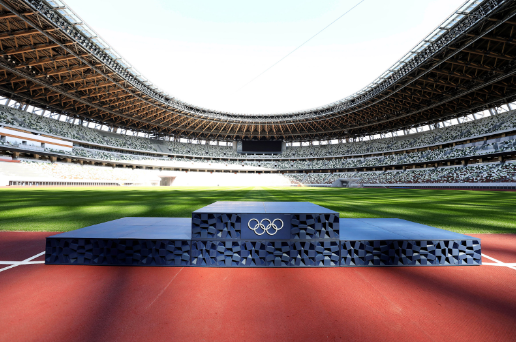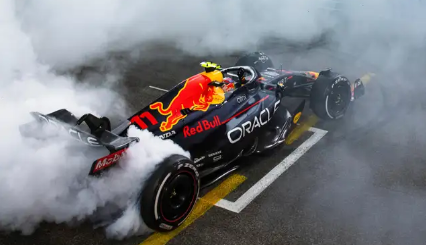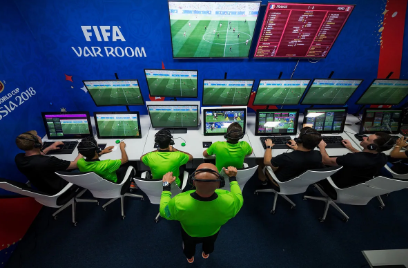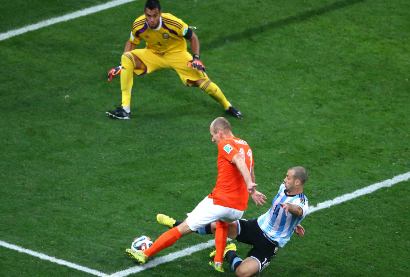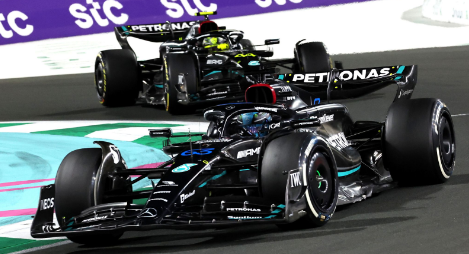Filed under:
The Olympics and other organized competitions have been around almost as long as civilization and the competitive edge that drives it has been around long before the first games. It’s that drive that pushes athletes to greatness at the highest levels. Going pro remains the dream for countless high school and college athletes but not every sport looks the same. For athletes in track and field the question of “going pro” becomes even more complicated. The opportunity to represent one's country or state at the highest levels is a tempting one but isn’t often lucrative. Running or doing field events professionally is as with any sport a lot of work. Yet the benefit isn’t the same. Every young athlete dreams of playing pro but taking that chance means a whole new world for track and field. That world is one with new rules and as many cons as pros.
The peak of athletics, a testament to the human drive for excellence. The game of all games. The Olympics mark the height of many professional runners careers. Yet the path to the games is what truly makes them professionals. Grant Holloway is one of the best team USA runners with two world championships and an Olympic silver medal among his awards. His silver was won during his first Olympic experience. His journey to the Olympics started in his college days. 2019 Holloway’s senior year became his breakout year. Already being the 60m hurdle champion two years in a row he seemed in perfect position for a killer final season. A killer season he got, smashing his own record for the 60m hurdles for a third NCAA championship. Outside of his NCAA accolades Holloway started his US career in 2018 with little success. In 2019 he found his stride at the World Championships taking 1st. His athletic versatility and major success made him an absolute shoe-in for the 2021 Olympics. He didn’t just go to the games he excelled bringing home silver in 110m hurdles. His domination didn’t stop there he took gold in both the World Championships and the World Indoor Championships in 2022 for the 60m (WIC) and 110m (WC). His international excellence will mark his career as a great. The drive it takes to succeed in these high-level competitions cannot be overstated.
Holloway’s path is one very reminiscent of other major international figureheads in the sport. Yet not all find success as immediately as Holloway did. For others the battle for the championship is longer. Kendra Harrison, another silver medalist for USA in 2021 had a rough start to her professional career. Bursting onto the scene in 2015 Harrison was set to represent the US at the Olympics. After a few failed attempts at joining the team and a hamstring injury, her performance at the US Championships in 100m hurdles secured her spot on the national team. But the story wasn’t all rainbows from there. The storm clouds came first in the 2015 World Championships with Harrison being disqualified after a false start. 2016 wasn’t much better. A year of highs in qualifying came to a crashing low after she ran into the first hurdle in the World Indoor Championships. The rest of her 2016 season followed a similar pattern with Harrison reaching all time bests but ultimately failing to compete in the 2016 Olympics. She finally got her Olympic chance at the Tokyo Olympics. Her wait was well worth it as she placed 2nd in the 100m hurdles. This up and down trajectory is just as common in the running world as Holloway’s linear success. These athletes experience some of the greatest moments in sports but they can come at a cost.
There’s a societal idea that professional athletes are all multi-millionaires living in luxury. For many sports this is painfully true but for athletes outside of ticket selling leagues making money is a whole lot harder. The International Olympic Committee doesn’t pay athletes for attending. The US Olympic Committee receives broadcasting deals and corporate sponsors. Teams like USA Swimming get additional funds from entrance fees. A portion of this money goes to medal bonuses which in the US are $25K for gold, $15K for silver, and $10K for bronze. Obviously not every athlete is competing or medaling regularly enough for this to be a stable form of income. Some teams give out stipends which can vary in amount. Most athletes however end up living off of grants or even part-time jobs. USA Track and Field Foundation Board director Jack Wickens looked at the income of track and field athletes before the 2020 Olympics and found that only about two of the top ten US track and field athletes make over $50K annually. Over half of the remaining top ten earn less than $15K annually this is money from all sources including prize money, grants, and scholarships. Runners in places 11-25 can expect to take home between $10K-$60K annually. Athletes below almost all have other jobs to supplement the lack of income. The people representing our country at the highest level have to have secondary jobs to supplement income they need to live. The Olympics have a job program but not every athlete can be selected and in recent years more and more companies have been pulling out. From a financial perspective going pro in track and field is one long struggle. These athletes don’t just have to worry about performing their best but also how they’re going to make rent.
A heavy financial burden isn’t the only drawback, playing at the highest level can take a heavy mental toll as well. Many professional athletes have spoken out about the heavy mental toll things like the Olympics take on them. Research from 2021 found that 24% of Olympic athletes felt high or very high levels of distress after the games. This distress isn't just felt by those who fail to perform but also by those who succeed. After all of the excitement people quickly forget and the athletes are cast back down from their celeb status. Poor mental health is an extreme concern for these high level athletes. The highs and lows take a heavy toll with many showing symptoms of depression and imposter syndrome. These athletes often feel great pressure and don’t want to appear weak. Steps are being taken to offer more mental health services but they are far from perfect. The financial and mental stress make the question of going pro a much more complicated one for track and field athletes.
Being a professional athlete and representing one's country is among the greatest honors. The thrill of not just the win but of the race itself is unreplicatable. It takes drive and risk. Yet players shouldn’t have to risk mental and financial stability to play at the highest levels. There is a burden on all professional athletes but there is a responsibility to minimize these burdens so the best focus on being the best. The opportunity to play professionally especially for one's country shouldn’t be a question and yet the best continuously evaluate and weigh out whether it’s worth it. Every young athlete dreams of going pro but those dreams become more and more complicated. Behind the dream is one huge question; the Olympic question.
